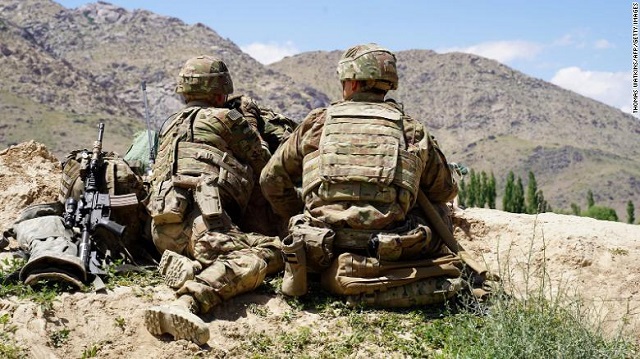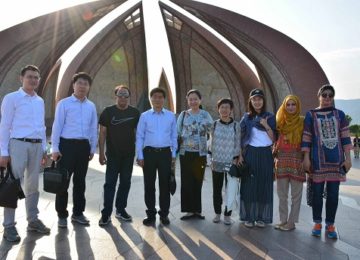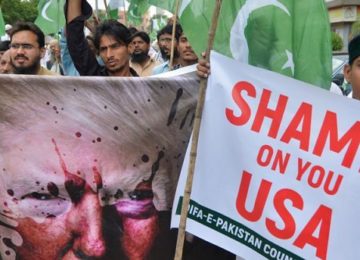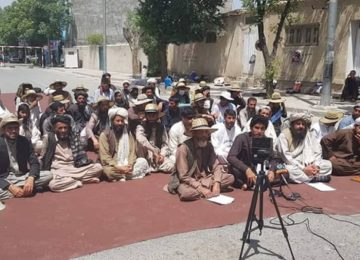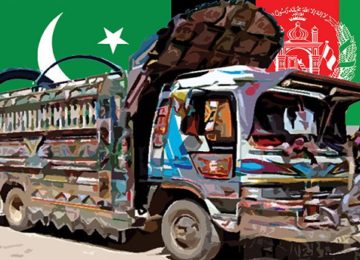April 20, 2021
Washington (CNN)President Joe Biden’s planned withdrawal from Afghanistan includes an intense unraveling of the extensive intelligence and covert action network that the US has built there over the two decades since 9/11 as part of the global war on terror.
The current plan includes the removal of the hundreds of special operations forces not publicly acknowledged by the US government but known to be there, according to two defense officials and a senior US official with direct knowledge of the situation.
Most, if not all, CIA operators working in Afghanistan are almost certain to leave as well, current and former officials told CNN. Without the support of a conventional military presence, on-the-ground intelligence gathering becomes significantly more difficult — and more dangerous.
Neither the removal of special operations forces nor the likely removal of intelligence operators has been previously reported.
A final decision has not yet been made as to the status of CIA paramilitary officers, one military official told CNN, but the thinking at the moment is that they likely will have to leave. Even if some personnel do remain after Biden’s self-imposed September 11 withdrawal deadline, it will be far more challenging to pull off the kind of covert operations the CIA has become famous for since 9/11.
CIA Director Bill Burns admitted as much in a Senate Intelligence Committee public hearing last week.
“When the time comes for the US military to withdraw, the US government’s ability to collect and act on threats will diminish. That’s simply a fact,” Burns said before noting the CIA will retain “a suite of capabilities, some of them remaining in place, some of them that we’ll generate that can help us to anticipate and contest any rebuilding effort [by al Qaeda or ISIS].”
National security adviser Jake Sullivan acknowledged Sunday that US intelligence gathering capability in Afghanistan would be diminished when troops withdraw from Afghanistan, but said there would be enough capability to know whether al Qaeda is resurging months before it’s too late.”
It is true as the CIA director said we won’t have the same level of presence on the ground that we did when we had 3,000 troops or 30,000 troops or 100,000 troops,” Sullivan told CNN’s Dana Bash on “State of the Union.”
“But the CIA director also said we will retain sufficient capability so that we will have months of warning before al Qaeda is able to gather again external plotting capability to threaten the homeland,” he continued.
Asked whether special operation forces would stay behind, Sullivan said the US would “not have a military presence in Afghanistan other than to protect the embassy.”
Douglas London, a 34-year veteran of the CIA, said intelligence operations in Afghanistan are dependent on the large military presence the US has kept in the country.
“The US intelligence presence and ability to collect information depends on the military’s infrastructure across the country,” said London.
“As the US presence diminishes, and with it collectors who need to physically acquire intelligence on the ground, so does our visibility,” he added. “That human intelligence comes from sources on the ground who can be regularly met. How many can travel to Kabul, let alone outside the country?”
The fate of the special operations forces — who often work with the CIA on counterterrorism missions — is more clear cut.
“It’s unequivocal, all troops out,” the senior US official told CNN, asked specifically about special operations forces.
Counterterrorism is about to get harder in Afghanistan
Intelligence gathered by operatives working on the ground is often critical to covert CIA missions, including drone strikes, multiple sources said.
“With the right information, [you] can launch an operation to kill someone a thousand miles away within two hours. But if you don’t have any information, if you don’t have any intelligence, how on earth can you predictably do that?” a source with direct knowledge of internal discussions about the US counterterrorism mission in Afghanistan going forward.
It’s unclear how or if the Biden administration will replace the intelligence and counterterrorism tools that senior officials publicly acknowledge they are giving up.
Republicans and Democrats on Capitol Hill have been clamoring for details, but two sources familiar with the administration’s outreach to lawmakers in recent days tell CNN that officials have only gone as far as to say that the US will continue to fight terrorist groups there in the same way it does in other places around the world.
That response has been interpreted by some as continued drone strikes and, in some cases, use of special operations forces, according to one of those sources. The exact details of the plan remain unclear, leaving many lawmakers unsatisfied.
Administration officials are briefing the Senate on Tuesday, according to a Senate aide. House lawmakers expect a similar briefing next week also.
Regional options
Multiple sources told CNN that officials are still exploring ways to mitigate the inevitable intelligence void that comes from withdrawing American troops.
Specifically, US officials are examining the possibility of staging American forces in the region so they will be able to dip into Afghanistan for counterterrorism missions. But current and former officials say there is no way to do that as effectively as when you are in the country.
Maintaining any “over the horizon” counterterrorism capability will be very difficult without nearby basing, the US military official added, noting the withdrawal makes those missions “a very different problem” than in years past.
The current sense is that the nearby countries of Pakistan, Turkmenistan, Uzbekistan, and Kazakhstan are unlikely to agree to host US forces, meaning the most likely possibilities are friendly Gulf countries, like the United Arab Emirates, where the US already maintains a military presence, according to multiple sources familiar with the planning.
Multiple current and former officials acknowledged that staging assets in a country like the UAE would require CIA paramilitary officers, special operations forces or drones to travel an extremely long distance for any operation in Afghanistan, adding to the risk and complexity of the mission.
“The prospects for direct kinetic counterterrorism pressure from the Gulf, they’re not impossible, particularly for strike, but they’re just not good,” a source with direct knowledge of internal deliberations told CNN.
Any attempt by agency paramilitary or intelligence officers to operate outside of Kabul — whether to meet with sources or conduct a counterterrorism raid — would also be dramatically riskier, according to multiple sources.
A more dangerous mission
Because agency personnel won’t be able to operate out of a local military base and will instead have to travel from Kabul, or even outside of Afghanistan, they would be forced to travel longer distances to more exposed places that might be in Taliban-controlled areas.
That not only gives potential targets the chance to hear of the impending raid and get away, it also provides adversaries the opportunity to launch a counterattack of their own, with agency personnel far outside of the so-called golden hour from the nearest hospital.
“You have a longer time to get there, so [adversaries] will tell people you’re coming,” said one former intelligence official. “So even if you have the right place, the chances of the guy not being there go up. And then once you get there, you have to land if you want to catch people, and they’re going to rally toward that area. When you fly out it’s going to be like the OK Corral.”
“You increase the risk to the force and you increase the risk for the mission to fail,” this person said.
Further complicating the picture is the risk that the Taliban could overrun the country once the US military leaves, potentially forcing the US to shutter its embassy to avoid another incident like the 2012 attack on the US embassy in Benghazi, which killed four Americans.
That would mean that any remaining agency personnel, who likely would be working out of the US embassy, would have to leave too — thrusting human-source intelligence gathering in Afghanistan back into a pre-9/11 darkness.
“A full US and NATO withdrawal speeds the eventual collapse of the Afghan government and the unviability of the US embassy in Kabul, which then leads us to a pre-9/11 collection posture where we have nothing in the country,” said Marc Polymeropoulos, a former CIA operations officer.
Biden owns the risk
What those capabilities look like, however, remains unclear and sources tell CNN that previous administrations have wrestled with the same set of bad choices but were unable to identify a viable solution.
This was the case for Pentagon officials during the Trump administration, according to a source familiar with the situation who noted that the inevitable risks of bringing the number of US forces in Afghanistan to zero are why military and intelligence officials have long pushed for some kind of residual force.
That unavoidable counterterrorism trade-off also comes with a political risk of holding the bag if there’s another 9/11-style attack against the US, which current and former officials agree has long been a driving force behind deliberations of this kind in the past.
Biden has “agreed to take on that risk,” one source familiar with internal Pentagon discussions about the same issue during the Trump administration told CNN.
This story has been updated with comments from national security adviser Jake Sullivan on “State of the Union.”
Courtesy: CNN



